



296 SQUADRON HISTORY
_____________________________________________
296 Squadron of the Royal Canadian Air Cadets began training on 8 Jul 1943. Formed in partnership with the Kiwanis Club of Galt, the Air Cadet League of Canada, and with the support of the Royal Canadian Air Force – it began as a training program to build the skills of young men preparing to support the war effort. Galt was a component of the British Commonwealth Air Training Plan, the massive undertaking that allowed Canada to provide training to thousands of pilots who came from many of the allied nations. The Aircraft School was instrumental in providing initial support to the squadron.
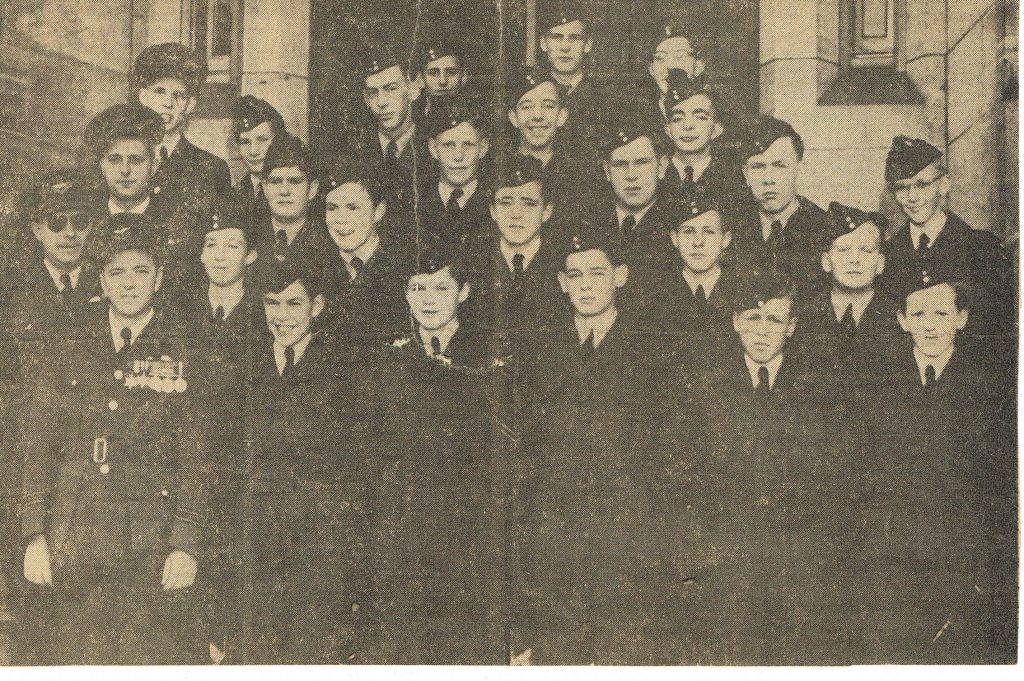
Commanded first by Squadron Leader Hoffman (who was also a Principal at St Andrews school) – Training at the time included marksmanship, drill, aircraft engines, photography, navigation and numerous other skills.
In the early 1940’s, the squadron formed it’s first band, a brass band that would morph into the Galt Kiwanis Boys Band (at the same time severing it’s cadet links).
In 1952, with support from the local infantry regiment, what is now the Royal Highland Fusiliers of Canada, 296 Squadron established a pipe and drum band. This was a first for an air cadet squadron in Canada. Rising quickly to prominence, this band was asked to play for the Queen’s Coronation in Ottawa in 1953.
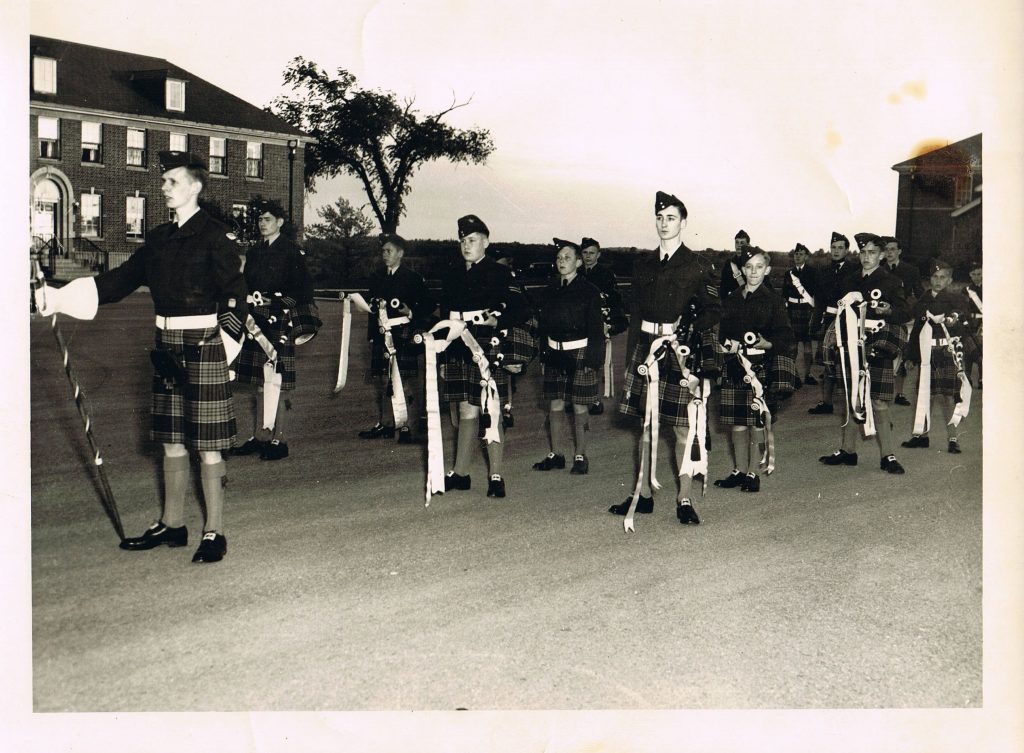
Over time the program has continued to grow, with the squadron ranks increasing to 70 average members. Uniforms have changed many times, beginning with the wool castoffs of the RCAF in the 1940’s, to the dark green tri-service uniforms during unification in 1968 to the current deep blue uniforms.
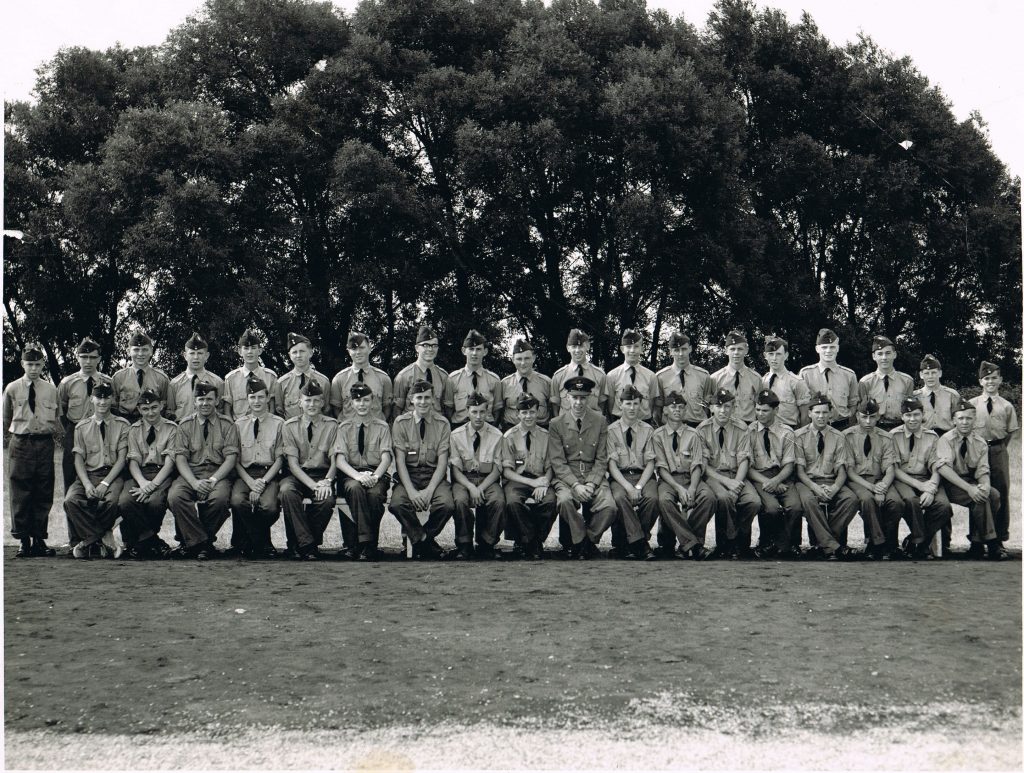
In 1973, the squadron formally changed its name from the Galt Air Cadets to its new (and current) incarnation – 296 City of Cambridge Royal Canadian Air Cadet Squadron. The program grew further in in 1975, when it opened to female cadets, who on average make up close to 40% of the cadets in the squadron.
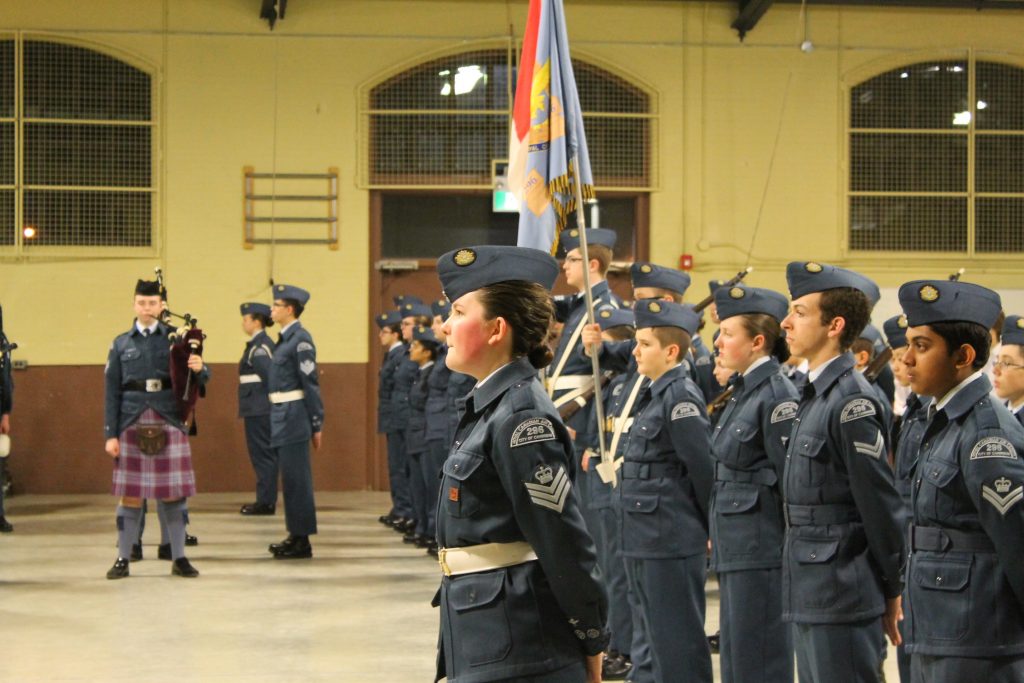
With strength of over 100 cadets in recent decades, the squadron continues to be a strong presence in the community. We continue to have strong ties and sponsorship from the Kiwanis Club of Cambridge, and have made many new relationships, working closely with the City of Cambridge, with Lisaard House, the Cambridge Self Help Food Bank and many other groups so the cadets have an opportunity to give back to their community.
As a squadron, we are frequently decorated for our drive and efficiency by our governing bodies, including the Air Cadet League. We work closely with our Squadron Sponsoring Committee, who continues to provide oversight and funds, ensuring a strong partnership that benefits the cadets.
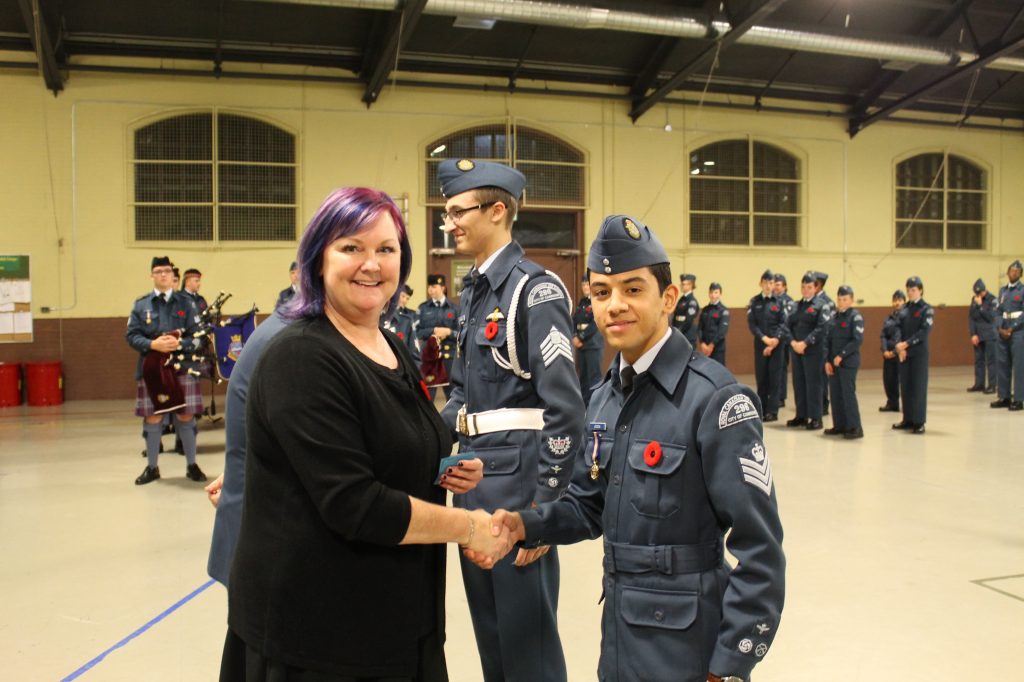
296 has contributed to the training of many pilots, with many past members of the squadron serving as pilots in the Royal Canadian Air Force, or with local or national carriers. The program has continued to expand, to keep up with technology – navigation classes working in lessons on Global Positioning. Aircraft Maintenance now covers jet engines, and the latest technology used by the Canadian Space Agency.
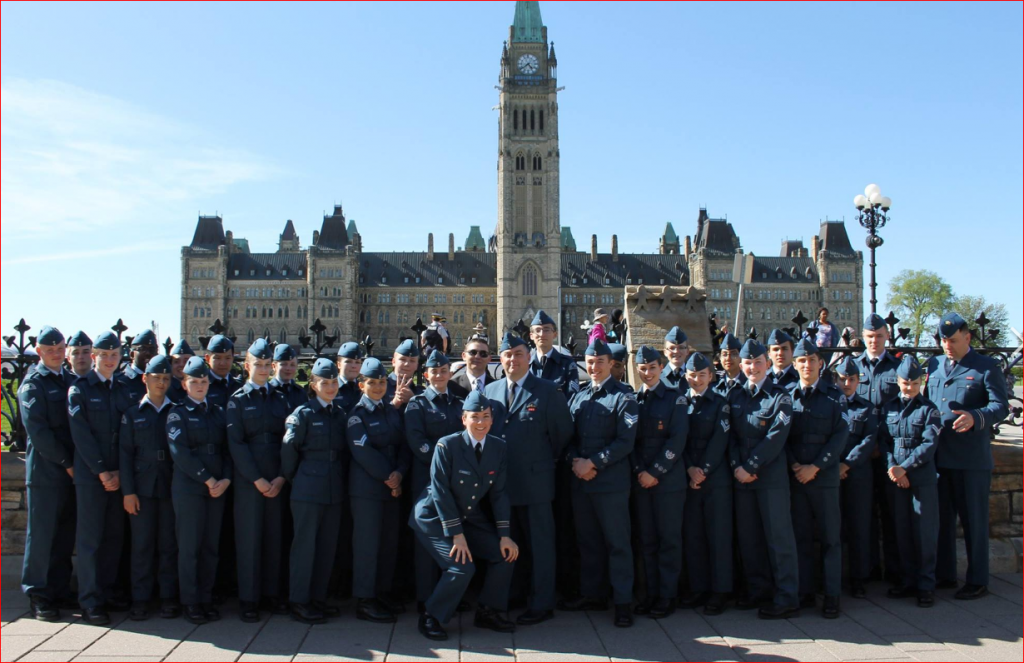
We still make the leaders of tomorrow, and our motto remains:
Pontem Ad Prospere Futurm-A Bridge to a Successful Future.
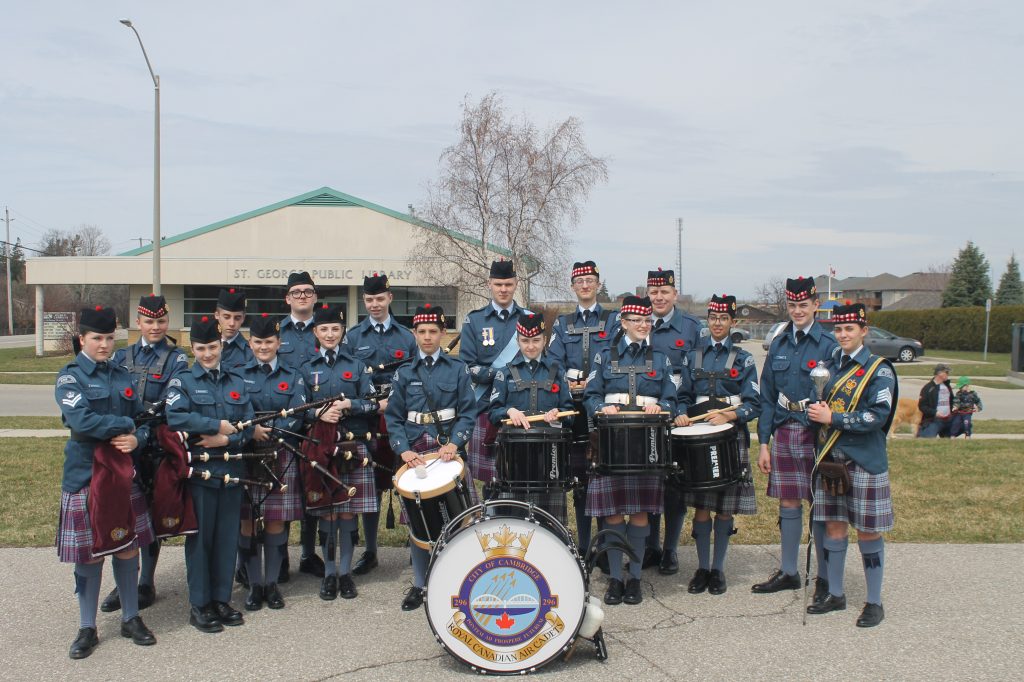
Visit our online photo archive to see where we’ve come from in the 1940’s, and what we’re doing now!
http://www.flickr.com/photos/94953058@N07/sets/
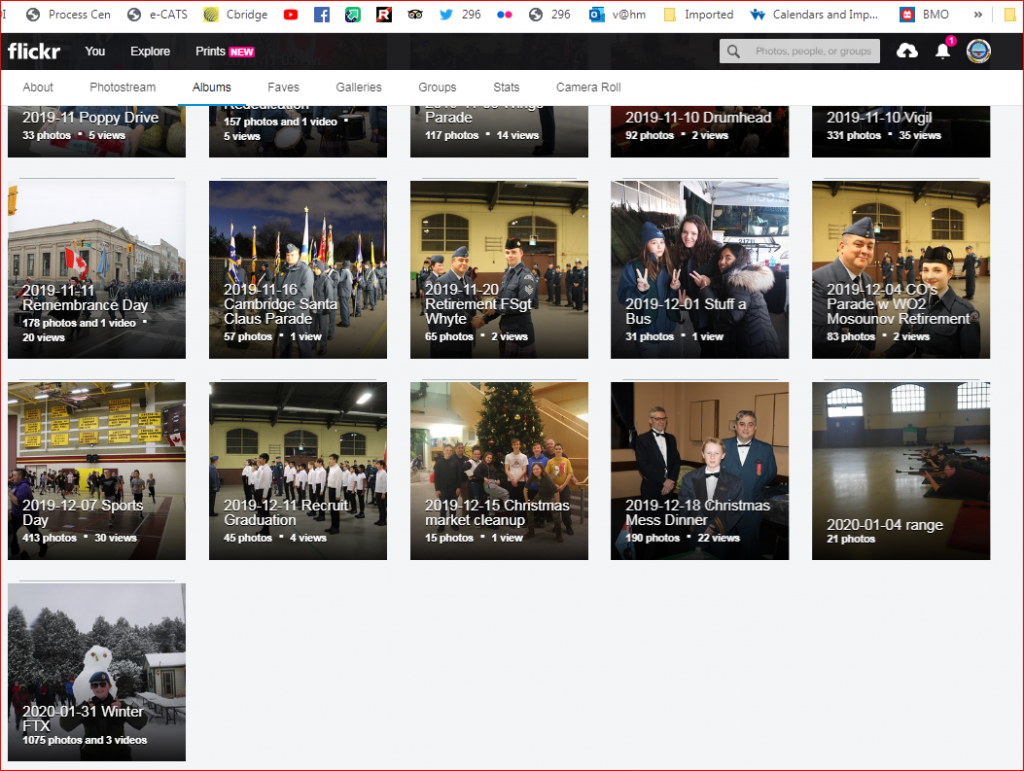
Squadron Commanding Officers
A demanding job, unit Commanding Officers balance the tremendous work of sponsors, staff, and cadets to keep the squadron vital and functioning. A CO can have a profound effect on the unit, driving it to new heights, bringing in new initiatives, new ideas. Many people may not remember all of their Officers and staff, the names of all of their other cadets they were with – but they frequently remember the CO during their time.


From 1943 to today, here is that list of Commanding Officers of 296 Squadron:
| 1943 | F/L | PJ Summers |
| 1948 | F/L | A Delong |
| 1952 | S/L | H Bardwell |
| 1953 | S/L | F Ashton |
| 1958 | S/L | A Westwood |
| 1960 | Maj | J Stephenson |
| 1962 | Maj | D Barwell |
| 1968 | Capt | R Bain |
| 1972 | Maj | G Drinkwater |
| 1980 | Capt | T Penny |
| 1986 | Capt | M Delarosbil |
| 1989 | Capt | W Henderson |
| 1990 | Capt | G Vallis |
| 1992 | Maj | J Cummings |
| 1996 | Maj | G Goodall |
| 2001 | Maj | CT Mitchell |
| 2011 | Maj | P Verriet |
| 2014 | Maj | M Tardiff |
| 2017 | Maj | CT Mitchell |
| 2021 | Capt | C Legge |
| 2024 | Capt | CT Mitchell |
Note – while Commanding Officer ranks were dependent on time in rank and unit size ( allowing a senior Captain with a large unit to be promoted WSE to Major) – this was changed in 2021 limiting CO rank to Captain as a maximum.

©2012-2025 | Powered by WordPress with TechMediaWorX | Subscribe: RSS | Back to Top ↑